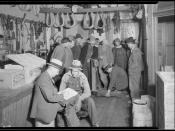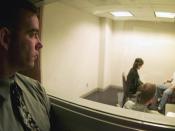In job analysis there are many difficulties, some practical, some concerned with the attitudes of employees, therefore, there are important methods which may be used.
The direct observation method is always necessary but has several drawbacks. A skilled worker can make a job look easy, and an experienced worker can make a job look difficult. Some manual work is too fast or intricate to be observed accurately, unless film or video is used and mental processes are not revealed.
The interview method with the jobholder is nearly always necessary but difficulties often occur, largely because the worker may be suspicious of the job analysis. The employee may decide to exaggerate the importance of the job or occasionally try to make it seem unimportant. The main problems with these interviews are that the worker's attitude may influence his or her account of the job, the employee may, even if co-operative, forget some detail of the job and emphasise the most recent events or the employee may not be able to express him or herself clearly.
The interview method with the supervisor is an inevitable occurrence, though its value varies. Supervisors are surprisingly often out of touch with the details of the job, they frequently have never done the job themselves. They sometimes allow their description of the job to be influenced by their opinion of the jobholder and they may exaggerate the duties and responsibilities of the job in order to increase their own importance.
A study of the materials of work, that is, tools, working materials, machines, documents, communication and media, frequently provides a useful check on information obtained in other ways, and may suggest questions to be asked.
Previous studies of work study records, training manuals and accident reports, are sometimes available and can be brought up to date...
![milano - hotel marriott, 10.02.2009 [SW interview]](https://s.writework.com/uploads/4/47227/milano-hotel-marriott-10-02-2009-sw-interview-thumb.jpg)


Good
Everything is done very well here. One can tell this is upper-level writing.
3 out of 4 people found this comment useful.